As everyone knows, red is the colour of love. I certainly have a special affinity for red. When I design, I really try to vary the colours I use, but red definitely keeps coming back. More often than not, really. I do love a good red.
One of my favourite reds is this red that I used for Mystic Roses:
 The yarn is from Wollmeise, and the colour is called Rosenrot – i.e. rose red. The colour was definitely a big part of the inspiration for this shawl.
The yarn is from Wollmeise, and the colour is called Rosenrot – i.e. rose red. The colour was definitely a big part of the inspiration for this shawl.
In the years since I knit Mystic Roses, I have worn it to numerous yarn festivals, teaching events and other yarny occasions, and it never fails to capture people’s attention. If I do say so myself, I am incredibly happy with how it turned out. It is still one of my favourite shawls, and I wear it often.
Happy Valentine’s Day, everyone!
During the last week of January, Kate Atherly and I were teaching on board the Celebrity Reflection during the Cooperative Press Knitting Cruise.
 It was a 7 day cruise leaving from Miami. There were a variety of classes available to the cruisers, ranging from Lace Design to Soxpertise, Sizing & Fit to Reversible Cables, and all sorts of other delightful topics. Linda Sokalski was also there teaching Swedish Twined Knitting and Modular knits.
It was a 7 day cruise leaving from Miami. There were a variety of classes available to the cruisers, ranging from Lace Design to Soxpertise, Sizing & Fit to Reversible Cables, and all sorts of other delightful topics. Linda Sokalski was also there teaching Swedish Twined Knitting and Modular knits.
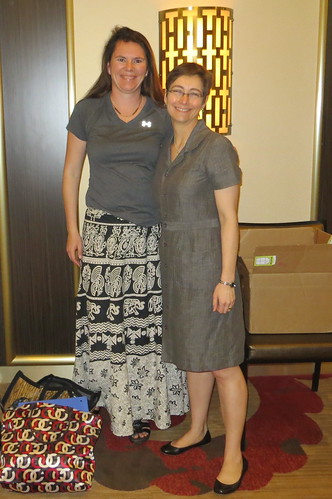
I have worked with Kate before – among other things she was the technical editor for Ancient Egypt in Lace and Color – but I had never had a chance to spend an entire week together with her. We had a lovely time. The classes were wonderful (many thanks to all our students for making this such a great experience for both of us) and in addition to that it was nice to just hang out and chat (and knit!) with another designer and author. We work so much via the internet and electronic communications, but sometimes it’s really great to have a real, live colleague in the same room at the same time.
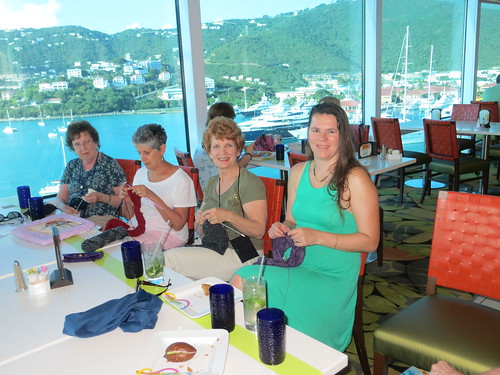 The classes were taught during the days that the ship was at sea. In addition, Linda (who is sitting right next to me in the picture above) arranged a couple of stitch-and-bitch sessions. At this one, the ship was getting ready to leave St. Thomas, and we got to enjoy both our knits, the company, and the fabulous view of the harbour as we were continuing on our journey to St. Maarten.
The classes were taught during the days that the ship was at sea. In addition, Linda (who is sitting right next to me in the picture above) arranged a couple of stitch-and-bitch sessions. At this one, the ship was getting ready to leave St. Thomas, and we got to enjoy both our knits, the company, and the fabulous view of the harbour as we were continuing on our journey to St. Maarten.
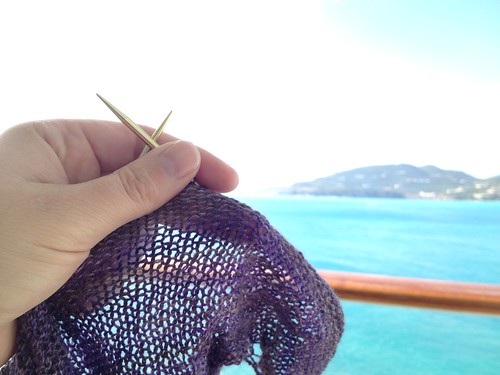 I also had the chance to get some knitting done on my next design on our own balcony. I’d grab a cup of tea and settle down and knit for a while. It was wonderful. And quite the stark contrast to the current weather at home (it was -25C in Ottawa during the week I was gone).
I also had the chance to get some knitting done on my next design on our own balcony. I’d grab a cup of tea and settle down and knit for a while. It was wonderful. And quite the stark contrast to the current weather at home (it was -25C in Ottawa during the week I was gone).
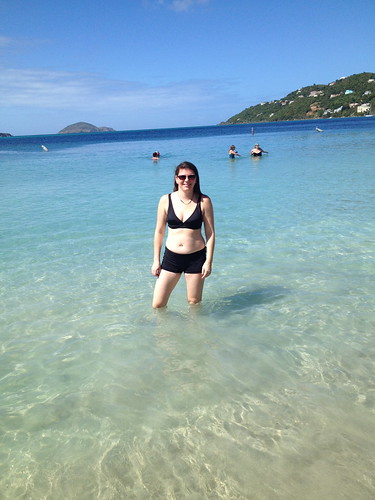 And of course I had the chance to venture out on the islands while the ship was docked. It was absolutely heavenly to get to swim in the Caribbean in the middle of winter. I also went biking in Puerto Rico, and snorkling on St. Maarten. I miss the warmer weather during the summer when I can spend a lot more time outdoors at home. At this time of year, I tend to curl up by the fireplace instead. Also nice, but not quite the same.
And of course I had the chance to venture out on the islands while the ship was docked. It was absolutely heavenly to get to swim in the Caribbean in the middle of winter. I also went biking in Puerto Rico, and snorkling on St. Maarten. I miss the warmer weather during the summer when I can spend a lot more time outdoors at home. At this time of year, I tend to curl up by the fireplace instead. Also nice, but not quite the same.
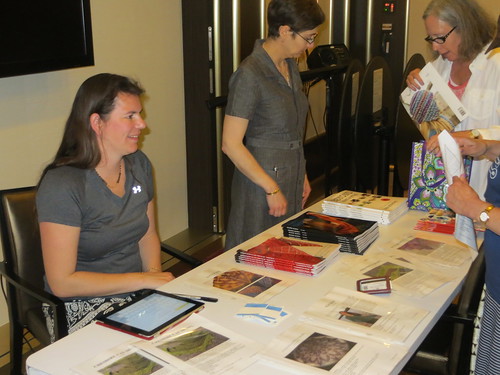 We also brought some books and patterns to sell. I had Shaping Shawls and Ancient Egypt in Lace and Color, as well as a number of single patterns, and Kate had brought her Beyond Knit & Purl, as well as Knit Accessories.
We also brought some books and patterns to sell. I had Shaping Shawls and Ancient Egypt in Lace and Color, as well as a number of single patterns, and Kate had brought her Beyond Knit & Purl, as well as Knit Accessories.
We met lots of lovely people, and I really want to thank everyone again for coming. And for those of you who didn’t get a chance to join us, I hope we do it again in the future. January is a most excellent time to take a break from winter by knitting in the Caribbean.
I met Gwen Bortner at TNNA a few years ago – we were both at the Yarn Thing Designer Dinner. She had recently published Entrée to Entrelac, and was kind enough to give me a copy. I haven’t knit a lot of entrelac, although I have tried it, and have been intrigued by the construction technique. However, I’m sure you know how these things are…. I got distracted by lace. And perhaps some double-knitting, cables and colour work. Anyhow, I’ve always been meaning to get back to it.

Earlier this winter, I was asked if I would write a review of the book, and I thought it would be a wonderful idea.
The early part of the book contains a very thorough explanation of how to work basic entrelac. It breaks it out into the most basic components (2 types of rectangles and 8 variations of triangles) and then launches into an explanation of how to create those. Like a lot of knitting, there aren’t really a lot of complicated stitches involved in creating entrelac – basically it’s knits, purls, some picked up stitches and increases and decreases. It’s the combination of these basic stitches that makes it interesting.
Gwen has a number of projects in the book that illustrate various points and types of entrelac knitting. But it was when we got to the combination chapters that things got really interesting. Most of the time when we see entrelac, it’s either stockinette or garter stitch. But there is no reason entrelac cannot be combined with cables or lace. Or why not all three at the same time?
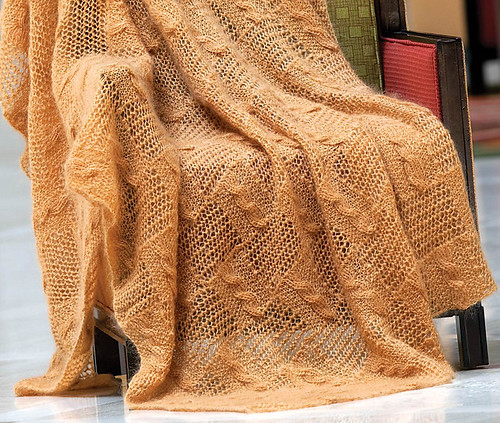
I’ve been meaning to design an entrelac lace shawl for years. It’s still in the early stages of the design, but every so often I mull it over and refine my initial idea. This is an afghan, but it shows how effective it can be to combine entrelac with other types of knitting.
Another combination that really is right up my alley is with doubleknitting. Entrelac usually has a very pronounced right side vs wrong side, but with doubleknitting you end up with two “right” sides.

Really, I think that by combining various techniques, you can create items that are truly unique and wonderful And Gwen definitely manages to convey the love of entrelac and the joy of exploring new challenges in the book. She gives enough information to learn the techniques, and then describes ways to broaden the horizons from there.
Gwen blogs on regularly at Two sides – Two points together with Kellie Nuss. They recently published a review of my Shaping Shawls. If you’d like to read it, it can be found here.


Recent Comments